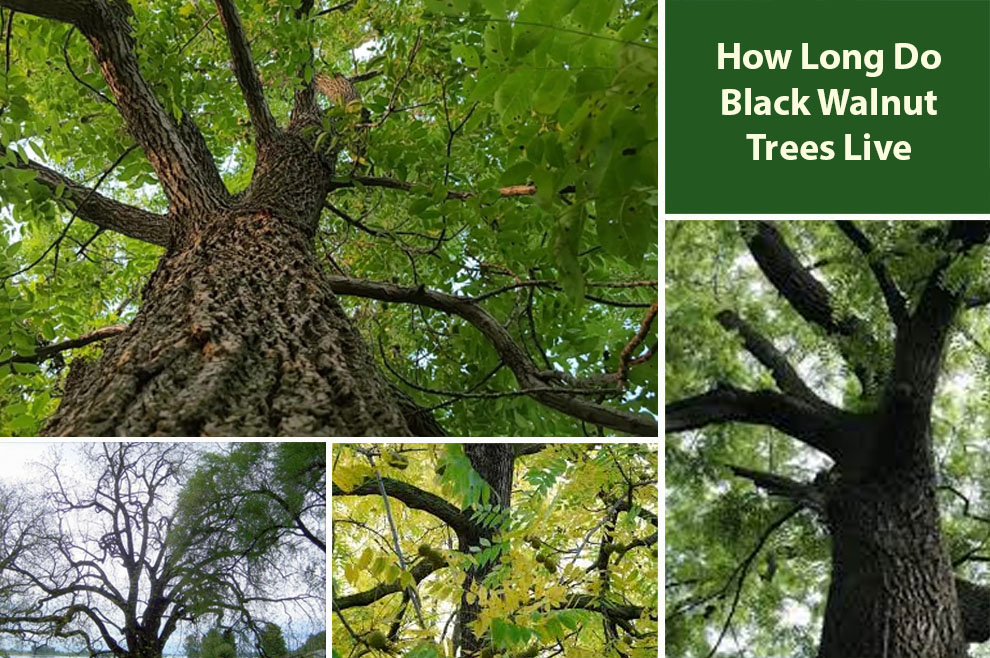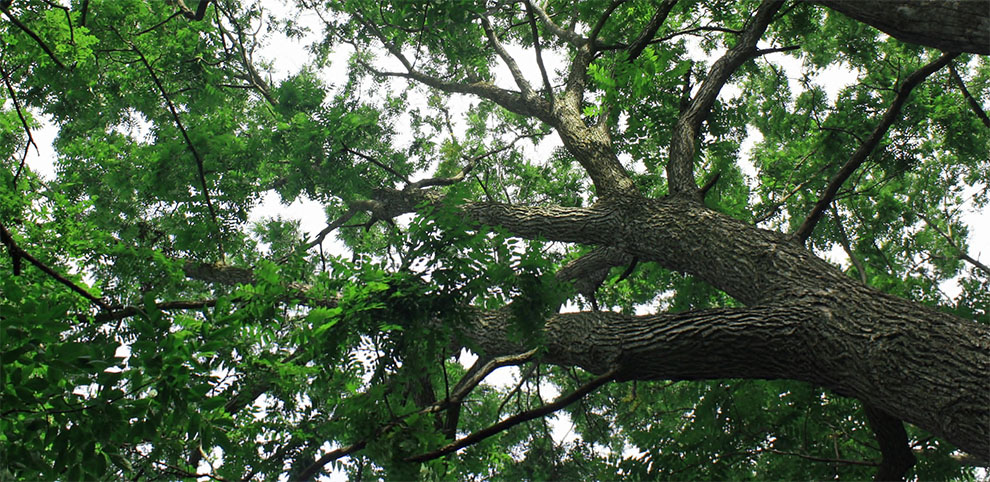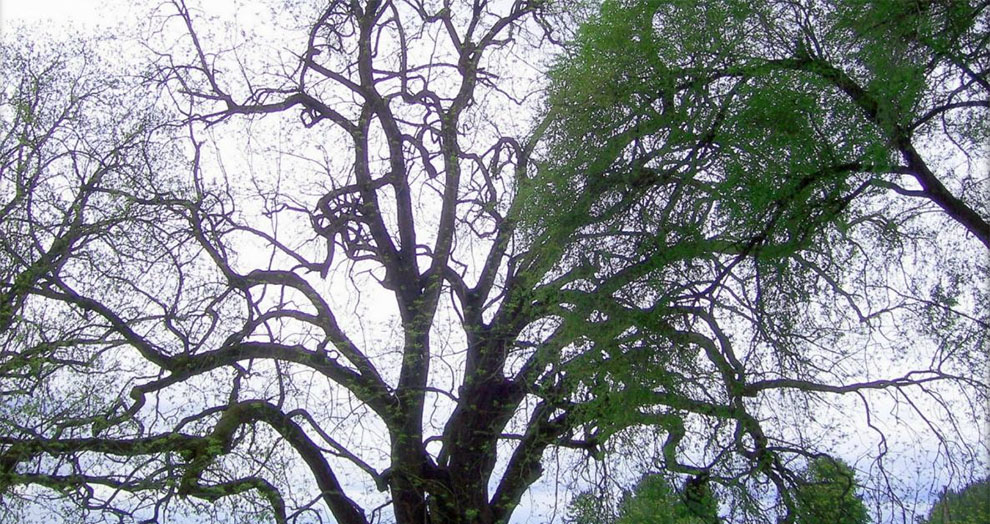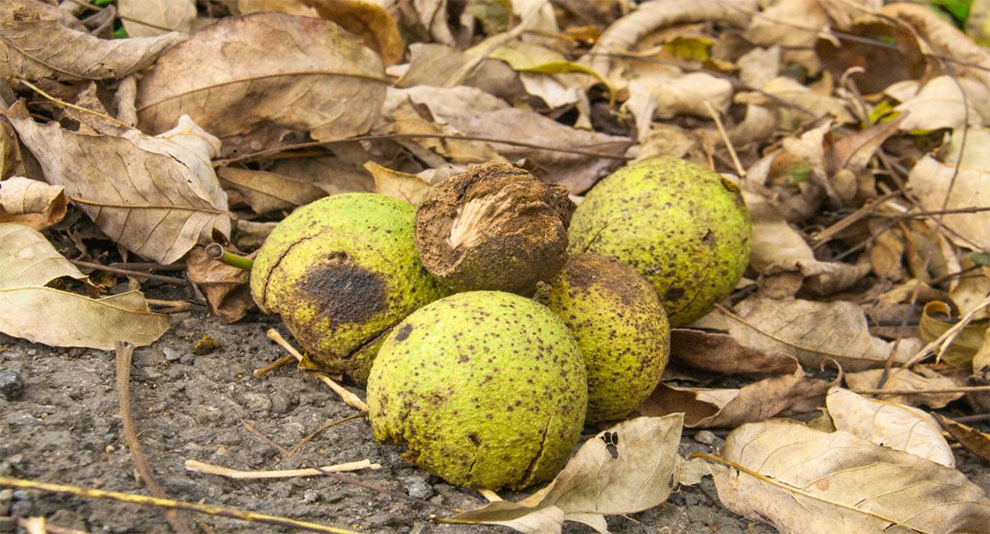How Long Is The Lifespan of Black Walnut Trees?
Black Walnut Trees have an extremely long lifespan. They can live for a hundred years and sometimes even more.

Walnut trees, known for their valuable timber and delicious nuts, are long-lived trees with a lifespan that can span several decades.
The black walnut variety is no exception. If you do not know how long do black walnut trees live, we will tell you all about it and also discuss the factors that influence it.
Roughly black walnut trees live for 120 years, but they are capable of living much longer up to 250 years under favorable conditions.
Factors such as genetics, environmental conditions, tree care practices, and disease or pest management can influence their lifespan.
With proper care and maintenance, walnut trees can provide their benefits, including shade, timber, and nut production, for many years, making them a valuable addition to landscapes and orchards.
Throughout their extended lifetime, walnut tree varieties contribute to ecosystems, support biodiversity, and bear witness to the passing of generations.
Black Walnut Tree Lifespan

Black walnut trees (Juglans nigra) are known for their longevity and can live for several decades, sometimes even centuries. A healthy black walnut tree can live between 100 and 150 years, but there have been cases where they have survived for over 200 years.
The lifespan of a black walnut tree can be influenced by various factors, including growing conditions, disease resistance, and environmental stressors.
It’s important to note that the lifespan of a tree can vary based on its circumstances and the care it receives. Factors such as soil quality, availability of water, exposure to pests and diseases, and overall health can impact the tree’s longevity.
Regular maintenance, including proper pruning and addressing any health issues promptly, can help extend the longevity of black walnuts.
Additionally, black walnut trees take some time to reach maturity and produce nuts. They typically begin producing nuts between 12 and 15 years of age, with peak nut production occurring between 30 and 50 years.
As they age, the productivity of black walnut trees may decline, but they can still provide valuable shade and aesthetic appeal even if nut production diminishes.
Related: How to Grow Walnut Trees | How to Plant Hazelnut Trees
Factors Affecting The Lifespan Of Black Walnut Tree
The lifespan of a black walnut tree can be influenced by several factors:
1. Care routine
Proper watering, pruning, and fertilization can promote the tree’s health and longevity. Water young black walnut trees regularly, providing deep watering sessions.
Aim for about 1 inch of water per week during the growing season, which may require more frequent watering in hot and dry weather. Focus on providing deep watering rather than frequent shallow watering.
Prune black walnut trees during their dormant period, typically in late winter or early spring before new growth begins. Black walnut trees typically benefit from nitrogen-rich fertilizers.
Apply nitrogen fertilizers in early spring or late fall. They may benefit from the application of micronutrients, such as zinc and manganese, especially in soils with known deficiencies. Fertilize black walnut trees every 1-2 years.
2. Soil conditions and drainage
Black walnut trees prefer slightly acidic to neutral soil with a pH range of 6.0 to 7.5. The soil must also be well-drained with good fertility.
Ensuring proper soil conditions and adequate drainage is important to support the tree’s longevity. Poor drainage can lead to waterlogging, which can suffocate the tree’s roots and cause root rot.
3. Climate and weather conditions: Black walnut trees are adapted to specific climate zones and can be sensitive to extreme temperatures or weather events. Severe heat, frost, drought, or excessive moisture can stress the tree and impact its lifespan.
While they can tolerate periods of drought, prolonged dry spells can stress the tree. Planting black walnut trees in suitable climate conditions can help maximize their longevity.
They are generally well-suited to regions with distinct seasons and moderate rainfall. Growing black walnut trees in regions with extreme climates or unsuitable conditions may pose challenges and negatively affect their lifespan.
It’s important to note that these factors interact with each other and addressing them collectively is crucial for maintaining the health and lifespan of a black walnut tree.
You might also like to read about: Hazelnut Tree Lifespan | How Long Doo Hickory Trees Live
Is Your Black Walnut Tree Dead – Signs That Indicate Your Black Walnut Tree Is In Trouble

If you notice these signs, it may be an indication that your black walnut tree is in trouble or potentially dead:
1. Lack of foliage: If your black walnut tree fails to produce leaves during the growing season, or if the leaves appear sparse, discolored, or wilted, it could be a sign of distress or even death.
2. Bark damage: Excessive bark damage, such as peeling, cracking, or splitting, may indicate a decline in the tree’s health. In severe cases, if the bark appears completely dead or detached from the trunk, the tree may be beyond recovery.
3. Dead branches: If the tree has significant dead branches throughout its canopy or shows signs of branch dieback, it suggests declining health. Dead branches may appear brittle, dry, or lacking any signs of growth.
4. Fungal growth or cankers: The presence of fungal growth, such as mushrooms or conks, on the trunk or base of the tree, can indicate internal decay. Cankers, which are areas of sunken or discolored bark, may also suggest disease or decline.
5. Insect infestation: Severe infestations by pests, such as borers or caterpillars, can weaken the tree and make it more susceptible to disease or decline. Look for signs of extensive pest damage, including holes, tunnels, or chewed foliage.
6. Absence of new growth: If your black walnut tree fails to produce new shoots or buds during the growing season for multiple years, it may be an indication of significant stress or even death.
7. Root issues: If the tree exhibits signs of root damage, such as stunted growth, leaning, or uprooting, it can be a serious concern for its overall health and survival.
It’s important to consult with a professional arborist or tree specialist who can accurately assess the condition of your black walnut tree and provide appropriate advice or treatment options.
Common Queries About The Lifecycle Of Walnuts
A. How long do black walnut trees take to grow and mature?
Black walnut trees typically take around 15 to 20 years to reach maturity. The juvenile stage, characterized by rapid vertical growth, can last for about 5 to 10 years, with nut production peaking between 30 and 50 years.
B. How long do black walnut trees live to produce nuts?
Walnut trees, including black walnut trees (Juglans nigra), have the potential to produce nuts for many years. While the productivity of walnut trees can decline as they age, they can continue to bear nuts for several decades.
The specific duration of nut production can vary depending on various factors such as the tree’s overall health, growing conditions, and management practices.
In general, walnut trees can remain productive for 50 years or more. However, it’s important to note that the quantity and quality of nut production may gradually decrease as the tree ages.
Regular tree care, including pruning, disease management, and providing adequate nutrients, can help maintain and extend the productive lifespan of walnut trees.
C. How many years does it take to harvest a black walnut tree?

The time it takes to harvest a black walnut tree and obtain viable nuts can vary depending on several factors. On average, black walnut trees start producing nuts between 12 and 15 years of age.
However, it’s important to note that the quantity and quality of nut production may increase as the tree matures.
Peak nut production is typically reached between 30 and 50 years of age. Therefore, it may take several decades from the time of planting a black walnut tree to harvest a substantial crop of nuts.
D. Which is the oldest walnut tree?
The oldest recorded walnut tree is the Ano Liosia Walnut Tree, located in the city of Athens, Greece. This walnut tree is estimated to be over 1,000 years old and is recognized as one of the oldest living walnut trees in the world.
It has been protected and preserved due to its historical significance and cultural value. It serves as a testament to the longevity and resilience of walnut trees.
